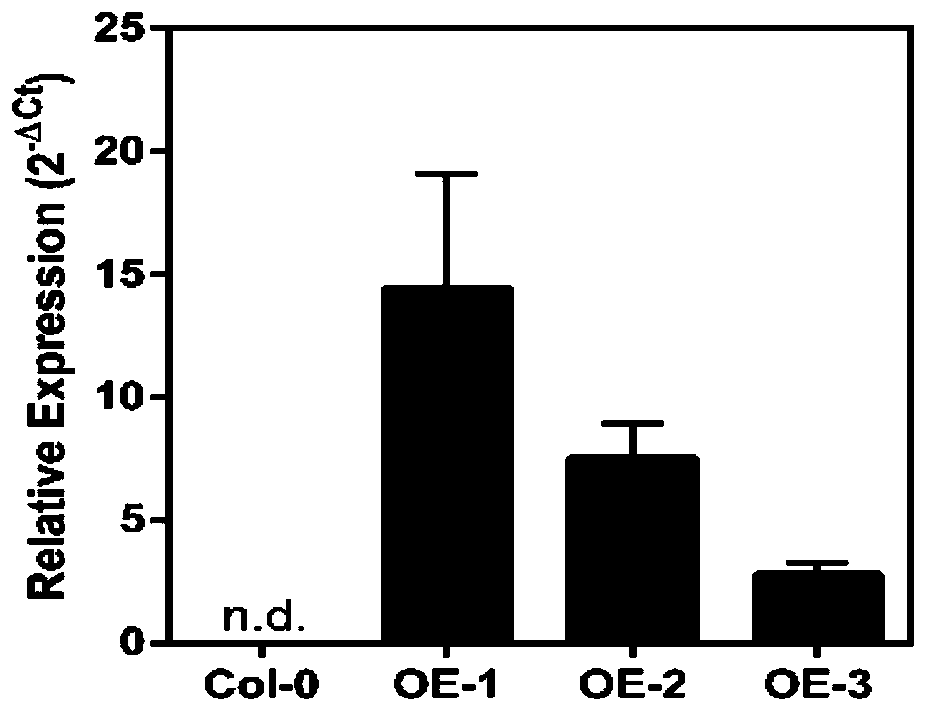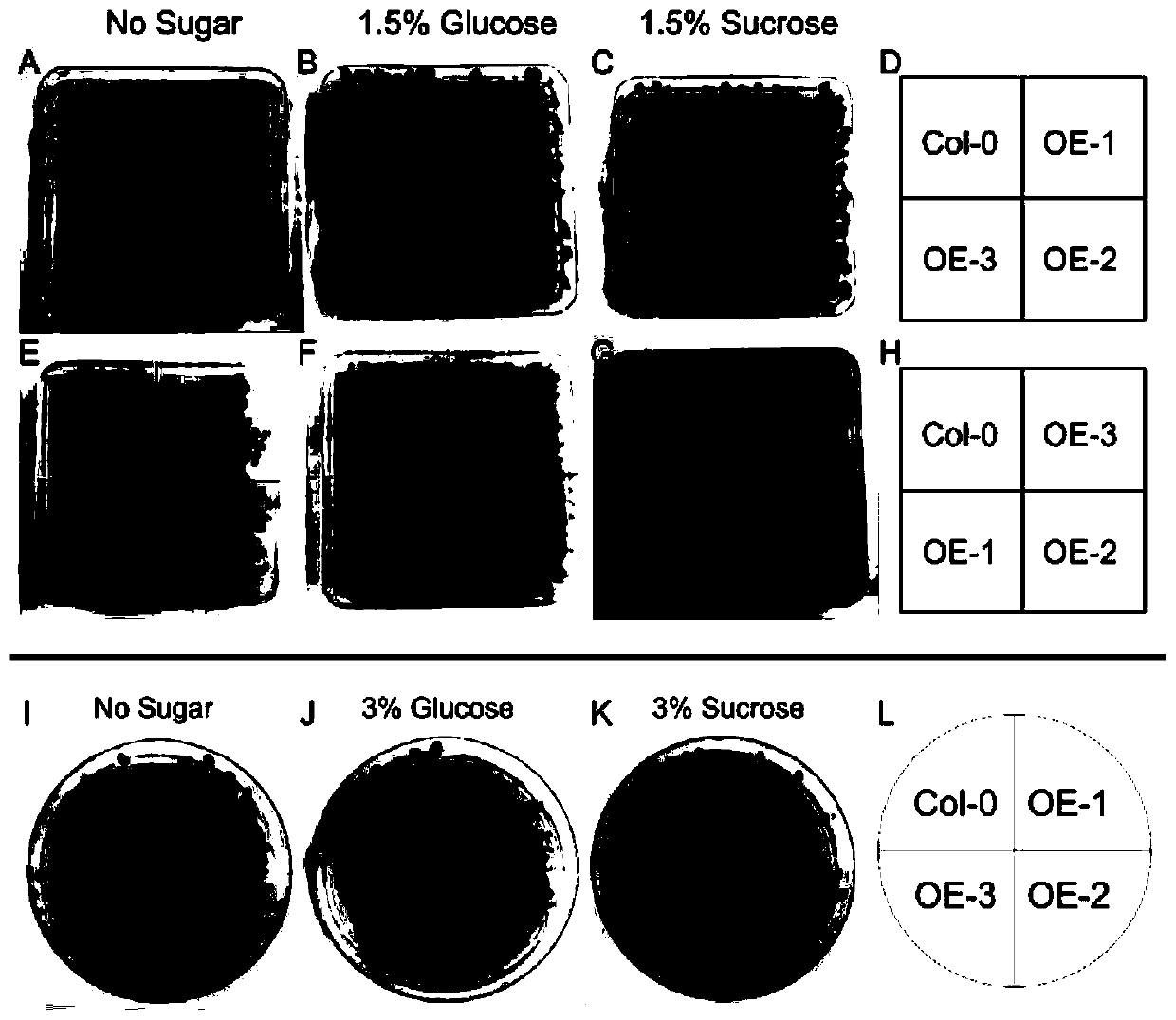Application of hexose transporter gene CsSWEET1a of camellia sinensis
A transporter and transgene technology, applied in the fields of application, genetic engineering, plant gene improvement, etc., can solve the problems of induction and function that have not been reported, and achieve the effect of enhancing low temperature resistance and good application value
- Summary
- Abstract
- Description
- Claims
- Application Information
AI Technical Summary
Problems solved by technology
Method used
Image
Examples
Embodiment 1
[0024] Embodiment 1: the overexpression vector construction of tea tree CsSWEET1a gene
[0025] According to the CsSWEET1a sequence disclosed in the NCBI database, its nucleotide sequence is shown in SEQ ID NO: 1, and the amino acid sequence of its encoded protein is shown in SEQ ID NO: 2, primers F and R were designed, and the tea tree leaf cDNA was used as a template , the gene CsSWEET1a was amplified by PCR. The amplified sequence was connected to the pEASY bluntzero vector, and finally connected to the Super promoter-pCambia1300 plant expression vector through a double enzyme digestion ligation reaction.
[0026] The primers used were F: 5'- CCCAAGCTT ATGGGTAATACTGCGCATTTCG-3', shown in SEQ ID NO: 3;
[0027] R: 5'- GCGTCGAC CTACTTGCTCGATCGCTTCTCT-3', shown in SEQ ID NO: 4.
Embodiment 2
[0028] Embodiment 2: Construction and screening of CsSWEET1a gene overexpression plant
[0029] The sequence-correct vector constructed in Example 1 was transformed into the Agrobacterium strain GV3101, and then transformed into the wild-type Arabidopsis plant to obtain the seeds of the transgenic contemporary seedling of Arabidopsis thaliana. The screening resistance gene carried by the Super promoter-pCambia1300 vector is hygromycin, and the transgenic seedlings of Arabidopsis thaliana were screened with hygromycin. The T2 generation seeds were screened for hygromycin resistance, and a line with a segregation ratio of about 3:1 between resistant seedlings and non-resistant seedlings was selected, indicating that in this line, the carrier sequence with the target gene is a single copy form inserted. The plants with hygromycin resistance in these lines were removed, harvested from individual plants, and then screened for hygromycin resistance. If there was no separation, it i...
Embodiment 3
[0031] Example 3: Sugar transport ability of plants overexpressing CsSWEET1a
[0032] After sterilizing Arabidopsis seeds, sow them on 1 / 2MS, 1 / 2MS+1.5% sucrose and 1 / 2MS+1.5% glucose medium, after 18 days of growth, take pictures to record the phenotype, see figure 2 A-D, see the underground part figure 2 E-H. After sterilizing Arabidopsis seeds, sow them on 1 / 2MS, 1 / 2MS+3% sucrose and 1 / 2MS+3% glucose medium, after 24 days of growth, take pictures to record the phenotype, see figure 2 I-L. The results showed that compared with the wild type, the overexpressed plants could absorb more sucrose or glucose, and therefore exhibited glycotoxic phenotypes such as leaves turning purple and roots turning brown.
[0033] After sterilizing the Arabidopsis seeds, they were sown in 1 / 2MS+1.5% sucrose medium, and after 18 days of growth, they were treated at room temperature and low temperature respectively. The low-temperature treatment operation is as follows, 4°C for 2 days, th...
PUM
 Login to View More
Login to View More Abstract
Description
Claims
Application Information
 Login to View More
Login to View More - R&D
- Intellectual Property
- Life Sciences
- Materials
- Tech Scout
- Unparalleled Data Quality
- Higher Quality Content
- 60% Fewer Hallucinations
Browse by: Latest US Patents, China's latest patents, Technical Efficacy Thesaurus, Application Domain, Technology Topic, Popular Technical Reports.
© 2025 PatSnap. All rights reserved.Legal|Privacy policy|Modern Slavery Act Transparency Statement|Sitemap|About US| Contact US: help@patsnap.com



